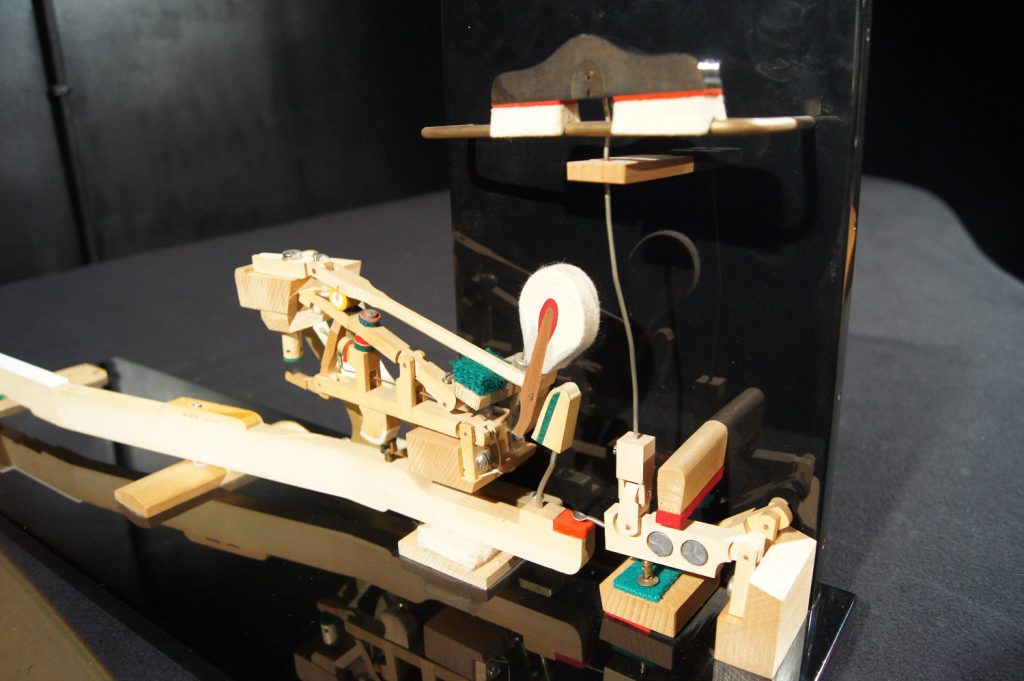
On a grand piano, the strings are horizontal, so the hammers move vertically.
As a result, the pianist feels the hammer and its movement at his fingertips, like the bounce of a ball at the end of a racket.
Starting from the finger, the keyboard is a rocker, and when you press a key on the visible side, it lifts on the invisible side (under the mechanics).
At this point, it pushes the hammer through the bridge and the “escape stick”. These elements allow to throw the hammer and to accompany it up to 2mm from the strings (the escapement).
This allows it to hit the string with its momentum without preventing it from vibrating afterwards. At that same moment, the damper lifts up to release the string and also let it vibrate.
The performance of the grand piano lies, among other things, in its repetition. Indeed, once the note is played, the repetition lever allows the hammer to be restarted immediately after hitting the strings. This allows the pianist to express his playing as faithfully as possible. This is the famous “double escapement” specific to grand pianos.
After the hammer is struck against the strings, it is caught (leather against wood) to prevent it from bouncing back and making an unwanted tremolo.
The sound will cut off when the pianist releases the key and the damper falls back against the string.
The only way to keep the sounds by releasing the keys is to use the loud pedal (right pedal) which moves all the dampers back or the tonal pedal (middle pedal) to keep only the selected notes.
This keyboard-mechanical set is made only of wood, felt and leather (with a few metal pins and screws); that’s why each element is adjustable, restorable or replaceable.
By adjusting the keyboard and the action, the grand piano is kept at its best performance.
All this, has for essential goal the comfort (touch) of the pianist!


